#Fate Marable
Text
Earl Bostic: The Jazz Virtuoso Who Redefined Music
Introduction:
Earl Bostic, born in Tulsa, Oklahoma, one hundred and eleven years ago today on April 25, 1913, was a musical prodigy who left an indelible mark on jazz. His innovative approach to music and electrifying performances continue to inspire musicians and listeners worldwide.
Early Life and Musical Beginnings:
In his youth, Earl Bostic honed his musical talents, playing the clarinet…

View On WordPress
#Arnett Cobb#Big Sid Catlett#Cab Calloway#Charlie Christian#Charlie Parker#Clyde Hart#Don Byas#Earl Bostic#Edgar Hayes#Fate Marable#Hot Lips Page#Jazz History#Jazz Saxophonists#Lionel Hampton#Lou Donaldson#Rex Stewart#Terence Holder#Thelonious Monk#Twelve Clouds of Joy
3 notes
·
View notes
Photo

(via Tulane Online Exhibits)
1 note
·
View note
Text
Eat, my children :D
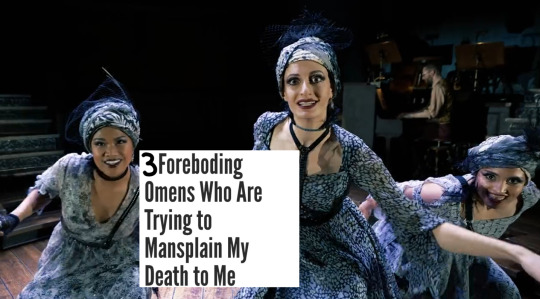
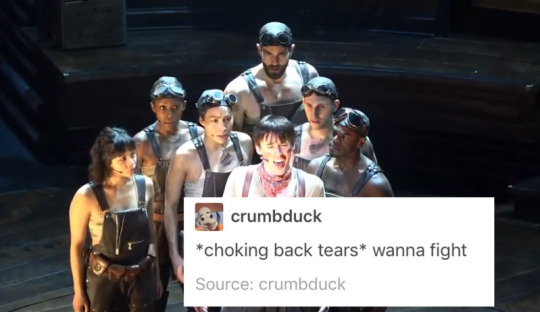






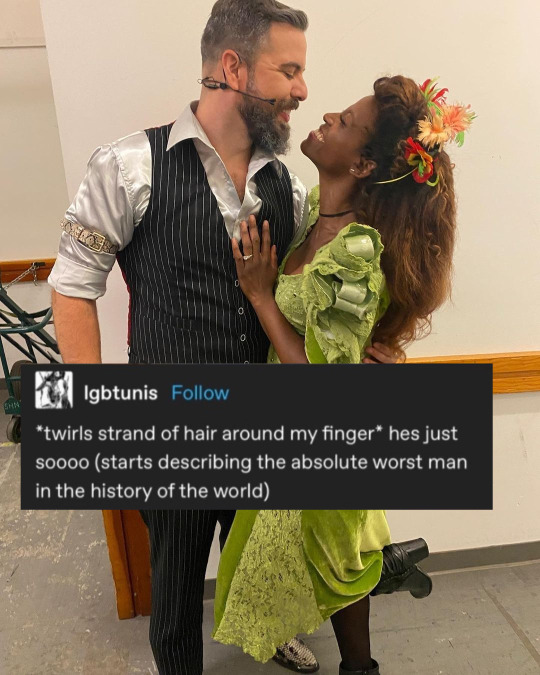

#hadestown musical#Hadestown#hadestown memes#musical theatre memes#orpheus#eurydice#hades#persephone#hermes#the fates#the workers#shea renne#bex odorisio#belen moyano#patrick page#eva noblezada#reeve carney#eddie noel rodriguez#kimberly marable#amber gray#john krause#timothy hughes#tall guy#jewelle blackman#yvette gonzalez nacer#afra hines#ahmad simmons#can't stop won't stop 😩
282 notes
·
View notes
Text
Some more gifts of stuff from last year and previous years!
Hadestown - First US National Tour
February 19, 2022 - madeapactwithsatan
MatinéeCast:
Nicholas Barasch (Orpheus), Morgan Siobhan Green (Eurydice), Kevyn Morrow (Hades), Kimberly Marable (Persephone), Levi Kreis (Hermes), Belén Moyano (Fate), Bex Odorisio (Fate), Shea Renne (Fate), Lindsey Hailes (Worker), Chibueze Ihuoma (Worker), Will Mann (Worker), Sydney Parra (Worker), Jamari Johnson Williams (Worker)Notes:
Do not post any part of this on any social media.
https://mega.nz/folder/n01CjaLR#ysg3zH6-Raf3cKDKYtE-cg
Company - Second US National Tour
December 2, 2023 - madeapactwithsatan
Cast:
Britney Coleman (Bobbie), Judy McLane (Joanne), Kathryn Allison (Sarah), Will Blum (t/r David), Ali Louis Bourzgui (Paul), Derrick Davis (Larry), Javier Ignacio (Peter), James Earl Jones II (Harry), Marina Kondo (Susan), Matt Rodin (Jamie), Emma Stratton (Jenny), Jacob Dickey (Andy), Tyler Hardwick (PJ), David Socolar (Theo)
Notes:
Very fun seeing a completely new show to me! I cough occasionally in act 2, but not too often. Never to be posted on any form of social media.
https://mega.nz/folder/vlMwVAIC#9bbhH3YJ2pqi8V52f5dPqg
Legally Blonde - Fourth US National Tour (Non-Equity)
April 30, 2023 - madeapactwithsatan
Matinée
Cast:
Hannah Bonnett (Elle Woods), Woody White (Emmett Forrest), James Oblak (Warner Huntington III), Ashley Morton (Paulette), Lea Sevola (Vivienne Kensington), Kaelee Albritton (Brooke Wyndham), Chris Carsten (Professor Callahan), Jesse Lynn Hart (Margot), Taylor Lloyd (Serena), Rory Furey-King (Pilar), Matthew Dean Hollis (Kyle/Grandmaster Chad/Dewey), Harley Barton (Veronica/Enid), Alexis Loiselle (Kate), Emma Wilcox (Chutney), Pablo Pernia (Padamadan/Nikos), Brandon Moreno (Carlos/Lowell), Gill Vaughn-Spencer (Pforzheimer), Jack Gimpel (Aaron)
Notes:
Do not post any part of this on any social media.
https://mega.nz/folder/GpkkWBrQ#9fxuoAo-zPEa_snga8QsnQ
Little Shop of Horrors - Off-Broadway Revival
February 25, 2023 - madeapactwithsatan
Audio | Matinée
Cast:
Matt Doyle (Seymour Krelborn), Maude Apatow (Audrey Fulquard), Bryce Pinkham (Orin Scrivello/Others), Brad Oscar (Mr. Mushnik), Aaron Arnell Harrington (Voice of Audrey II), D'Kaylah Unique Whitley (Ronnette), Tiffany Renee Thompson (Crystal), Khadija Sankoh (Chiffon), Teddy Yudain (Derelict/Audrey II Manipulation), Chelsea Turbin (Audrey II Manipulation), Weston Chandler Long (Audrey II Manipulation), Camryn Hampton (Ensemble), Jeff Sears (s/w Ensemble)
Notes:
Do not post any part of this on social media.
https://mega.nz/folder/XltjUYZY#gcOM9nfkDOvCm1ReER8W4g
Wicked - Second US National Tour (Munchkinland)
November 3, 2023 - madeapactwithsatan
Audio
Cast:
Olivia Valli (Elphaba), Celia Hottenstein (Glinda), Brett Stoelker (u/s Fiyero), Timothy Shew (The Wizard), Kathy Fitzgerald (Madame Morrible), Tara Kostmayer (Nessarose), Kyle McArthur (Boq), Boise Holmes (Doctor Dillamond)
Notes:
Beyond general annoying audience things (talking/singing/wrappers/ice), there are a couple of times phones go off and a walkie goes off in act one. Otherwise a very receptive audience with lots of cheering and applauding. Never to be posted on any form of social media.
https://mega.nz/folder/Ho1VUA7J#zsPrxRqDJ03hfaQbP_bajw
12 notes
·
View notes
Text
Happy first day of Spring everyone! 🌺🌹⚘️
To celebrate, here is the beginning of a little series I'm starting where I dreamcast proshots for musicals! Specifically, the types of proshots that mix up cast members from different productions I'll go more into detail later, but enjoy the castings for now! :)
Hadestown Proshot Casting!
In order of introductions in "Road to Hell".
The Fates (Lachesis, Atropos, and Clotho) - Kay Trinidad, Jewelle Blackman, and Yvette Gonzalez-Nacer respectively



Persephone - Kimberly Marable

Hades - Kevyn Morrow

Hermes - André de Shields

Orpheus - Nicholas "Nick" Barasch

Eurydice - Eva Noblezada

#hadestown musical#hadestown#hadestown broadway#hadestown tour#orpheus#eurydice#hades#persephone#hermes#proshot#dream cast#spring will come again#spring#spring has sprung#finley's proshot dream castings! 🎭
10 notes
·
View notes
Text
Today, October 2nd, marks the final Hadestown tour performances for Morgan Siobhan Green as Eurydice, Kimberly Marable as Persephone, Kevyn Morrow as Hades, and Bex Odoriso and Shea Renne as two of the Fates.
On the 4th, Maria-Christina Oliveras as Persephone, Matthew Patrick Quinn as Hades, Hannah Whitley as Eurydice, and Dominique Kempf and Nyla Waston as two of the Fates will take over! Nathan Lee Graham as Hermes starts then too even though Levi Kreis left earlier than the rest.
10 notes
·
View notes
Text
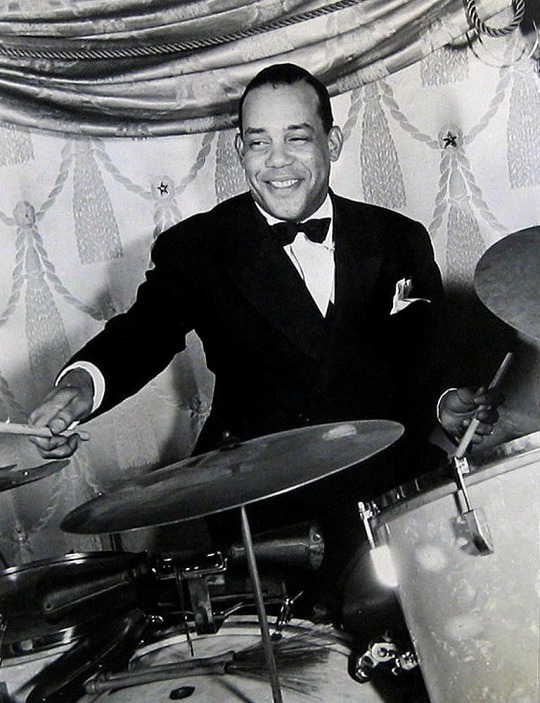
Arthur James “Zutty” Singleton (May 14, 1898 – July 14, 1975) was a jazz drummer.
His unusual nickname, acquired in infancy, is the Creole word for “cute.”
He was working professionally with Steve Lewis. He served with the Navy in WWI. He worked with such bands as Papa Celestin, Big Eye Louis Nelson, John Robichaux, and Fate Marable. He left for St. Louis, to play in Charlie Creath’s band, then moved to Chicago.
He played with Doc Cook, Dave Peyton, Jimmie Noone, and theater bands, then joined Louis Armstrong’s band with Earl Hines. He performed on landmark recordings with Louis Armstrong and his Hot Five. He moved with Armstrong to New York City.
In addition to Armstrong, in New York, he played with Bubber Miley, Tommy Ladnier, Fats Waller, Jelly Roll Morton, and Otto Hardwick. He played in the band backing Bill Robinson. He returned to Chicago. He returned to New York, working with Mezz Mezzrow and Sidney Bechet.
The British thriller writer, Eric Ambler, author of A Coffin for Dimitrios, and other novels, saw him perform in New York and became an instant fan. In his autobiography, Here Lies, Ambler mentions getting an autographed photo of the drummer, which he prized.
He moved to Los Angeles, where he led his band, played for motion pictures, and was featured on Orson Welles’s CBS Radio series, The Orson Welles Almanac. He worked with such jazz musicians as Slim Gaillard, Wingy Manone, Eddie Condon, Nappy Lamare, Art Hodes, Oran “Hot Lips” Page, and Max Kaminsky. #africanhistory365 #africanexcellence
0 notes
Text

New Orleans native LONNIE JOHNSON (1899-1970) changed the world with his big-toned, string bending guitar style on 6- and 12-string guitar. He was also a violinist, pianist, and a great songwriter with a heartbreaking, bittersweet voice.
As a young man, he left to tour England in 1917 with a musical revue, and when he returned in 1919, his entire family except his brother James had died in the 1918 flu epidemic.
He worked with orchestras, traveling and playing on riverboats, with Fate Marable and others.
He won a contest in St. Louis in 1925 which led to him recording hundreds of blues records for Okeh in the 1920s and 1930s, and making landmark records playing the very first jazz guitar solos.
He is well known for legendary sides playing guitar with Louis Armstrong's Hot Five, Duke Ellington, and stunning duets with Eddie Lang.
His career was marked by great achievements intertwined with years of manual labor, working in a steel mill in Peoria, Illinois and as a janitor in a Philadelphia hotel.
He had success in the late 1940s with the R&B hit "Tomorrow Night" for King Records which sold over three million copies. He went on to tour England, settling in Toronto. A glimpse of his wonderful style was captured on film during the American Folk Blues Festival Tours of 1962 and 1963.
He remains one of my absolute favorite musicians.
WORLD'S #1 SOURCE of great new Nationals: www.catfishkeith.com/national-guitars/
Photo thanks to Organissimo.
© Why I Love National Guitars - Catfish Keith
0 notes
Text
donnerstag, 12. oktober ‘23, 00.02 uhr
liste_111023
ladd’s black aces – sweet lovin‘ mama
ollie powers harmony syncopaters – play that thing
clarence william’s blue five – wild cat blues
bennie moten’s kansas city orchestra – moten stomp
walter page & his original blue devils – squabblin‘
eddie durham – i want a little girl
fate marable’s society orchestra – frankie & johnny
cookies ginger snaps – here comes the hot tamale man
zutty singleton – shimme-sha-wobble
henry ‘red‘ allen – down in jungle town
irving mills & his hotsy totsy gang – diga diga doo
charlie johnson’s paradise orchestra – the boy in the boat
mckinney’s cotton pickers – i’ve found a new baby
the little ramblers – hot henry
dick robertson and his orchestra – chinese laundry blues (mr. wu)
chas creath’s jazz-o-maniacs – king porter stomp
napoleon’s emperors – gettin‘ hot
0 notes
Photo

Fate Marable, Louis Armstrong, and the Big River
The riverboats that offered a chance for a musician to make some money and hone his craft is something that Louis Armstrong did and undoubtedly aided him in learning how to properly read music. The syncopatedtimes, in an article by Steve Provizer, provides a glimpse into Armstrong’s life on the river.
-Scott Wenzel
Read from the Syncopated Times…
Follow: Mosaic Records Facebook Tumblr Twitter
6 notes
·
View notes
Text
Jimmy Blanton: Revolutionizing Jazz Bass
Introduction:
In the annals of jazz history, the name Jimmy Blanton shines as a beacon of innovation and virtuosity in bass playing. Born one hundred and five years ago today on October 5, 1918, in Chattanooga, Tennessee, Blanton’s contributions to the jazz lexicon were nothing short of revolutionary. This exploration delves into the life, music, and enduring legacy of a bassist whose impact…

View On WordPress
#Barney Bigard#Ben Webster#Charles Mingus#Cootie Williams#Duke Ellington#Fate Marable#Jazz Bassists#Jazz History#Jimmy Blanton#Johnny Hodges#Ray Brown#Rex Stewart#Scott LaFaro
1 note
·
View note
Photo

“The ballroom of the Streckfus Steamers “Capitol” based in New Orleans. The boat ferried Louis Armstrong’s to his first documented appearance in Baton Rouge. In 1920, young Louis was merely the trumpet player in a tightly regimented steamboat band called the Palmetto Jazzerites led by the legendary Fate Marable. Marable often taught talented musicians like Louis Armstrong to read music in between performances in his riverboat “conservatory.” (Left to right) Henry Kimball, bass; Boyd Atkins, Johnny St. Cyr, David Jones, Norman Ma son,Louis Armstrong, Norman Brashear, Baby Dodds, Fate Marable. Circa-1920.”
(via Louis Armstrong First Documented Performance in Baton Rouge - Country Roads Magazine)
0 notes
Text
How are these still getting attention ily all 😭
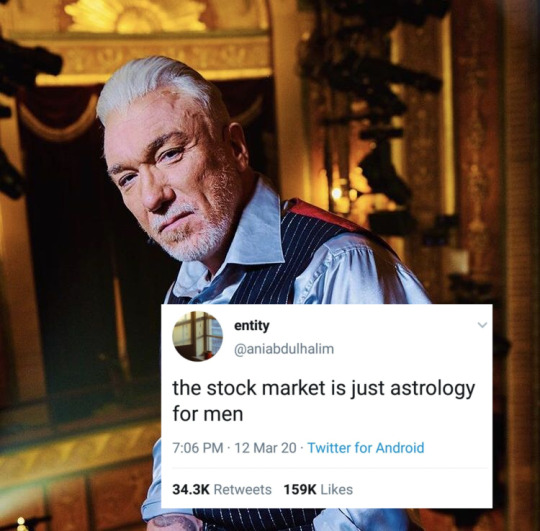


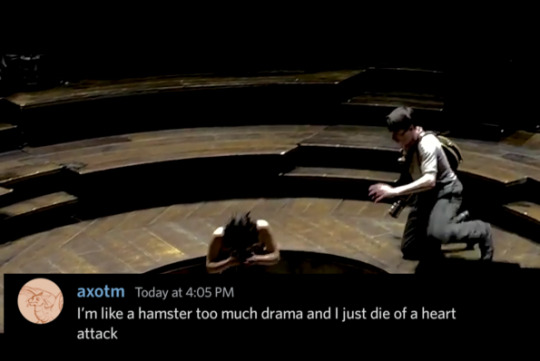




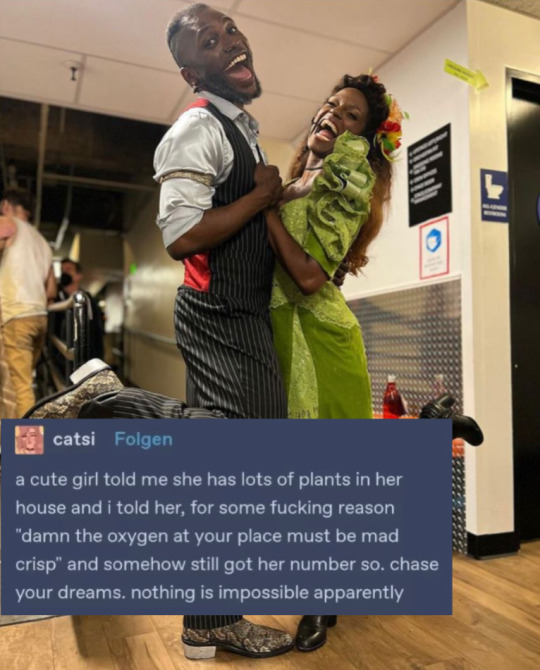

#hadestown#hadestown musical#hadestown memes#orpheus#eurydice#hades#persephone#hermes#the fates#patrick page#reeve carney#dominique kempf#belén moyano#nyla watson#eva noblezada#jewelle blackman#andre deshields#jamari johnson williams#kimberly marable#shea renne#bex odorisio#musical theatre memes#im genuinely astounded people pay attention to my silly shenanigans /lh /pos
119 notes
·
View notes
Text
I need Hadestown “Doubt Comes In” choreography based on the retelling of the myth where the reason Orpheus turns around is he hears Eurydice trip and turns around to help her up. Eurydice can’t finish her lyric of “Of the darkest night / Comes right before the --” because she trips, and the dead silence comes when Orpheus turns around and finds her on the ground.
The absolute pain because not only did he turn around right before they were home free, but because he now can’t help her get back to her feet because he can no longer be with her. It shows to the both of them (and the audience) that not only was she there the whole time, but that he truly does what he does out of love: his love for Eurydice.
#hadestown#hadestown musical#orpheus#eurydice#persephone#hades#orpheus and euridyce#doubt comes in#the fates#hermes#reeve carney#eva noblezada#amber gray#kimberly marable#patrick page#andre de shields#hadestown broadway#hadestown tour
147 notes
·
View notes
Text
LÉGENDES DU JAZZ
FATE MARABLE, PIONNIER DU JAZZ SUR LE MISSISSIPPI
"There was a saying in New Orleans. When some musician would get a job on the riverboats with Fate Marable, they'd say, 'Well, you're going to the conservatory.'"
- Zutty Singleton
Né le 2 décembre 1890 à Paducah, au Kentucky, Fate Marable était le fils de James Marable et d’Elizabeth Lilian Wharton. Marable avait deux frères, Harold et James, et trois soeurs, Mabel, Juanita et Neona. La mère de Marable, qui était professeur de piano, avait appris à son fils à lire la musique et à jouer du piano. Au début, la mère de Marable lui avait interdit de toucher à son piano, mais en son absence, il en avait profité pour expérimenter. De guerre lasse, sa mère avait finalement accepté de lui apprendre à jouer.
Enfant-prodige, Marable était si talentueux qu’il aurait commencé à se produire professionnellement à partir de l’âge de neuf ans.
DÉBUTS DE CARRIÈRE
À l’âge de dix-sept ans, en 1907, Marable avait commencé à jouer sur les navires d’excursion qui naviguaient le Mississippi. À l’époque, Marable avait été recruté par John et Joseph Streckfus pour remplacer le pianiste Charles Mills, qui avait été engagé pour jouer à New York. Très consciencieux, Joseph Streckfus avait à coeur le succès de ses vapeurs, qu’il considérait comme une sorte de salles de danse flottantes. Streckfus assistait à toutes les répétitions et critiquait même les performances de ses musiciens.
Engagé comme pianiste de ragtime, Marable se produisait sur le J.S. No. 1, qui était basé à Rock Island, en Illinois. Le navire, qui faisait la navette entre La Nouvelle-Orléans, la Louisiane et la ville de St. Paul, au Minnesota, était la propriété de l’Acme Packet Company. Même si le premier engagement de Marable lui avait permis de jouer en duo avec le violoniste blanc Emil Flindt, ses talents de compositeur et de dépisteur de talents étaient rapidement devenus évidents. Le revenu d’appoint fourni par le travail sur les vapeurs était très apprécié des musiciens de La Nouvelle-Orléans, particulièrement après la fermeture de Storyville (comme on désignait alors le quartier des prostituées ou ‘’Red Light’’) en 1917. En effet, le travail sur les vapeurs procurait un salaire régulier (35$ par semaine avec le gîte et la nourriture, et 45$ sans).
Parmi les responsabilités de Marable sur le vapeur ‘’J.S.’’, on remarquait le maniement d’un calliope à vapeur, une sorte d’orgue format géant doté d’énormes tuyaux qui possédait une pression de quatre-vingt livres et qui servait à annoncer l’arrivée du navire aux riverains. Conçue pour être clairement entendue à partir du rivage, la machine était difficile à manier et exigeait l’utilisation de gants pour manipuler les clés qui étaient souvent très chaudes. Marable devait aussi bourrer ses oreilles de coton afin d’éviter de devenir sourd.
Décrivant les activités de son groupe, Marable avait expliqué: “It sailed to New Orleans that year with me at the piano, and a white fellow playing the violin. That’s all we had. Each year, we added one more piece until we had what we thought was a great big band. Four pieces — piano, violin, trumpet and drums. All of them were white boys but me, and playing strictly ragtime.” Le groupe de quatre musiciens de Marable s’était produit sur le ‘’J.S.’’ jusqu’en 1910, alors que le navire avait été la proie des flammes. Après avoir acheté la Diamond Jo Packet Company, le capitaine John Streckfus avait lancé une nouvelle ligne comprenant des navires comme le St. Paul, le Quincy (qui était devenu plus tard le second ‘’J.S.’’), le Dubuque et le Sidney. C’est sur le Sidney que Marable avait poursuivi ses activités. Il précisait: “We were going in and out of New Orleans all the time, and I began to notice the type of music they were playing there. It just got under my skin.’’
Parmi les membres du groupe de Marable, on remarquait Johnny St. Cyr au banjo, “Baby” Ridgeley au trombone, Davey Jones au melophone, Paul Dominguez au violon, Sam Dutrey à la clarinette, Norman Mason à la trompette, George “Pops” Foster à la contrebasse et Warren “Baby” Dodds à la batterie. C’est aussi en se produisant sur les navires à vapeur que Marable avait découvert Louis Armstrong, qu’il avait engagé par la suite pour jouer sur les navires d’excursion qui se rendaient à la Nouvelle-Orléans.
À l’époque, Armstrong, qui était alors âgé de dix-huit ans, venait tout juste d’apprendre à lire la musique avec Davey Jones. Ce dernier avait déclaré à Armstrong: “Louis, you can blow and you can swing because it’s natural to you. But you’ll never be able to swing any better than you already know how until you learn to read. Then you can swing in ways you never thought of before!” Au début, les spectateurs avaient été peu réceptifs, mais Marable avait rapidement effectué les ajustements nécessaires. Marable expliquait: “Finally, after the intermission, We got a little spasmodic applause, but the people were completely amazed at our type of music. You could tell, though, that they were beginning to like it.”
Comme chef d’orchestre, Marable n’avait pas tardé à partager les leçons de sa mère avec ses musiciens. La plupart des musiciens de Marable jouant par oreille, il avait développé leurs aptitudes en leur apprenant à lire la musique. Comme l’avait expliqué un des batteurs de Marable, le légendaire Zutty Singleton: "There was a saying in New Orleans. When some musician would get a job on the riverboats with Fate Marable, they'd say, 'Well, you're going to the conservatory.'" En montrant aux musiciens à mieux exécuter les arrangements de danse pour les passagers des vapeurs, Marable a également conribué à lancer la carrière de plusieurs futurs grands noms du jazz comme Cab Calloway, Count Basie, King Oliver, Johnny St. Cyr, les frères Johnny et ‘’Baby’’ Dodds, Tommy Ladnier, ‘’Pops’’ Foster, Duke Ellington, Jimmie Lunceford, Fats Waller et Chick Webb.
Avec Armstrong, Marable avait remporté un grand succès avec la pièce ‘’St. Louis Blues’’, une composition de W. C. Handy qui avait permis à l’orchestre de devenir un des meilleurs groupes de danse aux États-Unis. Indirectement, Marable avait même participé à l’invention du scat. Marable adorait raconter une anecdote au sujet de l’enregistrement de la pièce “Heebie-Jeebies.” Ce jour-là, Armstrong avait complètement oublié les paroles et s’était mis à enchaîner les onomatopées. L’innovation avait été reprise par la suite par de nombreux chanteurs et chanteuses comme Cab Calloway, Fats Waller et Ella Fizgerald.
À l’époque, le ragtime était à son apogée. Marable précisait: “It was an entirely different kind music, than the ragtime which preceded it or the swing which followed. While ragtime, like jazz, was born and bred in New Orleans, St. Louis accepted it and some of the finest ‘rags’ ever written were written here.”
Le premier ragtime majeur de l’histoire avait été publié en 1895 sous le titre de “Harlem Rag’’ par Tom Turpin, qui était également l’auteur de “St. Louis Rag” et de “Bowery Buck.” Quatre ans plus tard, Scott Joplin avait publié son célèbre “Maple Leaf Rag”. D’autres pianistes et compositeurs de St- Louis avaient suivi l’exemple de Joplin, dont Sammy Paterson (Patterson), Louis Chauvin, Charlie Thompson, Robert Hampton, Walter Farrington et Johnny Arnold.
Marable étant très exigeant, les membres de son groupe devaient être capables de jouer plusieurs styles de musique, allant des grands succès de l’heure aux classiques du jazz. Même si Marable demandait à ses musiciens de rendre le public heureux et d’être disciplinés, il leur avait aussi permis de développer leur potentiel. C’est dans cette perspective que Marable avait encouragé le talent d’improvisateur de Louis Armstrong et qu’il lui avait laissé toute latitude pour se lancer dans de grandes envolées même s’il s’écartait parfois de la partition. Le groupe de Marable avait aussi servi d’école à plusieurs futurs grands noms du jazz dont Red Allen, Baby Dodds, Johnny Dodds, King Oliver, Pops Foster, Erroll Garner, Narvin Kimball, Al Morgan, Jimmy Blanton, Tommy Ladnier, Johnny St. Cyr, Red Allen, Elbert Pee Wee Claybrook, Earl Bostic, Al Morgan, Narvin Kimball, Gene Sedric, Joe Poston et Zutty Singleton.
Décrivant sa passion pour le jazz, Marable avait commenté:
“Jazz was the outgrowth of Negro life in New Orleans. It developed from the chants of roustabouts loading cotton boats, singing with perfect rhythm as they lifted the bales. It grew out of the music played by bands[,] which accompanied funeral processions. On the way to a burial the music was solemn, with a sound marching tempo. But on the way back from the burial the musicians pepped up the marches to cheer the mourners. No matter how they deviated from the melody in improvisation, though, they still had the basic foundation of timing, and they never missed a beat. They took marches like ‘My Maryland,’ ‘High Society,’ ‘Panama,’ and ‘That’s a Plenty’ — playing them first just like a brass band marching down the street, every beat and every instrument clear. Then when they started improvising, the foundation was still there.”
C’est la transition du ragtime vers le jazz qui avait convaincu Marable de transformer son orchestre presque entièrement composé de musiciens blancs en groupe exclusivement de couleur en 1917. Appelé le Kentucky Jazz Band, le groupe était surtout formé de musiciens originaires de Paducah, même si du propre aveu de Marable, il était loin d’arriver à la cheville des musiciens de La Nouvelle-Orléans.
Après avoir engagé un nouveau pianiste, le Kentucky Jazz Band s’était rendu dans le nord en 1918. Marable était demeuré à St. Louis pour faire la publicité du vapeur St. Paul. Pendant que Rodemich et ses joueurs de ragtime faisaient danser les spectateurs, Marable se produisait seul au piano au second étage de la cafétéria. L’année suivante, le groupe de couleur de Marable avait pris la place de Rodemich.
Même s’il était un excellent chef d’orchestre, Marable n’avait rien d’un compositeur. En 1916, Marable avait d’ailleurs publié la seule composition originale de sa carrière. Intitulée ‘’Barrell House Rag’’, la pièce avait été co-écrite avec Clarence Williams.
Mais la célébrité est souvent ingrate. À la suite du déclin du Dixieland et de l’avènement du jazz symphonique de chefs d’orchestre comme Paul Whiteman, plusieurs des musiciens de Marable avaient commencé à le quitter. Le premier à quitter le groupe avait été Louis Armstrong, qui avait signé un contrat avec le cabaret de Tom Anderson à La Nouvelle-Orléans en 1921 avant de se joindre à l’orchestre de King Oliver à Chicago l’année suivante. En 1928, lorsque le jazz à Chicago était entré dans une période de déclin, Marable avait tenté de ramener Armstrong dans le giron de l’orchestre en lui offrant un salaire variant de 75$ à 125$ par semaine, mais ce dernier avait décliné la proposition.
Le batteur ‘’Baby’’ Dodds avaient quitté le groupe la même année qu’Armstrong pour se joindre à l’orchestre d’Oliver. Au début des années 1920, le batteur “Zutty” Singleton avait lui aussi quité le ‘’navire’’ pour se joindre au Pee Wee Russell Trio, aux Rhythmakers puis aux groupes de Louis Armstrong.
Boyd Atkins, le violoniste qui avait écrit le célèbre “Heebie-Jeebies’’ popularisé par Louis Armstrong, avait quitté en 1923 pour lancer son propre groupe à Chicago. Pour sa part, le trompettiste Sidney Desvigne avait tiré sa révérence en 1926. Quant au trompettiste Irving Randolph, il avait poursuivi sa carrière avec l’orchestre de Cab Calloway. À la même époque, le saxophoniste Earl Carruthers s’était joint au groupe de Jimmie Lunceford. Quant au trompettiste Henry “Red” Allen, Jr., il avait quitté le groupe en 1929 pour devenir membre du Mills Blue Rhythm Band.
Loin de s’arrêter là, les départs s’étaient poursuivis en 1935 avec l’engagement du saxophoniste Tab Smith avec l’orchestre de Count Basie. Pour sa part, le joueur de trombone Nathaniel Storey s’était joint à l’orchestre de Chick Webb, avant d’aller jouer avec le groupe Jeter Pillar au Club Plantation de St. Louis.
Le contrebassiste Jimmy Blanton avait quitté le groupe en 1939 pour se joindre à l’orchestre de Duke Ellington, dont il avait fait partie jusqu’à sa mort en 1942. Marable avait pariculièremen regretté le départ de Blanton au sujet duquel il avait déclaré: “The year before Jimmy died, a music critic asked me whom I considered the greatest instrumentalists in the country at the time. My answer was: ‘Give me Benny Goodman, Louis Armstrong, Jimmy Blanton and let the rest of the world go by.’ If Jimmy had lived, I know he would now be regarded as the greatest bass player.”
Pendant que le batteur Floyd Campbell avait formé son propre groupe à Chicago, le saxophoniste Eugene Sedric s’était joint au groupe de Fats Waller. Pour sa part, le contrebassiste Al Morgan avait poursuivi sa carrière avec l’orchestre de Cab Calloway avant de devenir membre du groupe du chanteur Louis Jordan. Les trompettistes Charlie Creath et Dewey Jackson avaient dirigé leurs propres groupes à St. Louis.
Résumant cette période de sa vie, Marable avait commenté: “When Paul Whiteman arrived on the scene with his symphonic ideas, arrangements and what not, the Dixieland style of jazz began to peter out gradually, although with his entrance about 1921, my band was right on top of the list.’’ Très fier d’avoir contribué au développement de si grands musiciens, Marable avait ajouté:
‘’I have played ragtime, jazz-time and swing and I believe that the Dixieland style of jazz gives a man the best chance to play what’s in him. A real jazz musician doesn’t require the other man’s thought through arrangements. He plays as a solid musician of his own making. Furthermore, I can tell a New Orleans band from a Chicago type or a St. Louis type anytime. New York, of course, doesn’t have any particular type or style — it’s everybody’s style.
Lots of those jazz musicians couldn’t read music — never mind an arrangement. I could read myself because my mother was a piano teacher and I studied at Straight University in New Orleans, but, sometimes, there was only one man in a jazz band who could read. I firmly believe that New Orleans and Louis Armstrong have done more for the present dance band than any other factors, for the simple reason that Louis is New Orleans style personified, and he is copied by instrumentalists and singers alike.”
DERNIÈRES ANNÉES
Marable avait quitté l’orchestre en 1940 pour se consacrer à sa carrière de pianiste. À la fin de sa vie, Marable avait travaillé comme dépisteur de talents dans les clubs de La Nouvelle-Orléans. Il se produisait aussi dans les jam sessions.
Fate Marable est mort de pneumonie à St. Louis, au Missouri, le 16 janvier 1947. Il était âgé de cinquante-six ans. Marable a été inhumé au Oak Grove Cemetery de Paducah, au Kentucky.
Comme plusieurs musiciens de La Nouvelle-Orléans, Marable n’avait jamais tellement apprécié le nouveau style de jazz, qu’il trouvait souvent dépourvu d’émotion. Marable expliquait:
“The music of today seems to lack the fire that it had in the old jazz days, and some of the present bands are using arrangements copied from things we did in New Orleans in 1912. My favorites in the field today are Benny Goodman — and let me tell you that white people can play the Negro’s jazz, although some people will say no — Louis Armstrong, Count Basie, Woody Herman, the King Cole Trio and ‘Red’ Allen.”
Marable a eu un fils, Fate Marable Jr. Celui-ci, qui serait toujours vivant, habiterait à Pittsburgh et serait aujourd’hui âgé de plus de quatre-vingt-sept ans. Marable, qui avait suivi les traces de son père, avait dirigé un groupe et joué du piano à Pittsburgh. Marable est aujourd’hui considéré comme le père spirituel de plusieurs pianistes de Pittsburgh comme Mary Lou Williams, Earl "Fatha" Hines, Erroll Garner, Billy Strayhorn, Ahmad Jamal, Horace Parlan, Dodo Marmarosa et Johnny Costa.
©-2024, tous droits réservés, Les Productions de l’Imaginaire historique
2 notes
·
View notes
